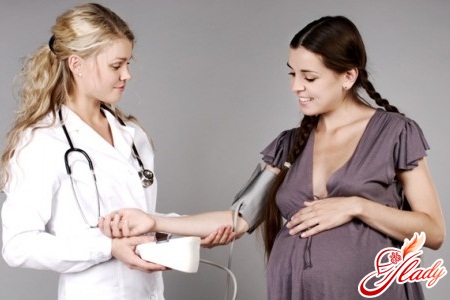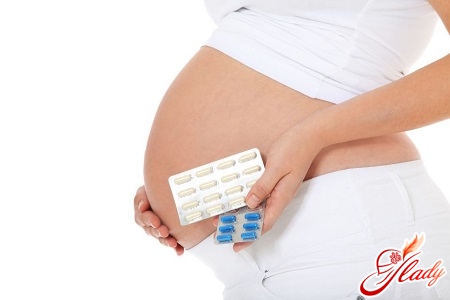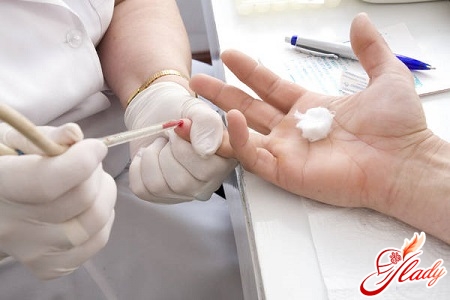 Childbirth.All pregnant women are looking forward to them, to meet their long-awaited babies. But at the same time as waiting, almost all women feel fear - some are not embarrassed to talk about it, and some keep their fear to themselves. However, the fact remains - the fear of childbirth is an integral part of the life of a pregnant woman. And pain relief during childbirth causes very different reviews. In particular, many say that anesthesia does not work. And expectant mothers begin to worry again. And this is quite natural - after all, all people without exception are afraid of pain. And in childbirth, pain is simply impossible to avoid. And expectant mothers are well aware of this. And, in addition, this panic fear is very strongly "fueled" from the outside - pregnant women have to listen to various horror stories about inhuman pain during childbirth almost every day. Frankly speaking, such stories significantly exaggerate and frighten the real picture of childbirth. As a result, the expectant mother is prepared for painful sensations, psychologically tenses up, and does not listen to the advice and instructions of doctors - gynecologists and midwives. As a result, not only do the painful sensations increase, but the process of normal natural childbirth itself is at risk. What to do in this situation? First of all, you need to calm down and remember that modern medicine offers pain relief during childbirth. You also need to understand what labor pain is and what causes it - this will help to some extent relieve the psychological stress of the expectant mother, which is very, very important.
Childbirth.All pregnant women are looking forward to them, to meet their long-awaited babies. But at the same time as waiting, almost all women feel fear - some are not embarrassed to talk about it, and some keep their fear to themselves. However, the fact remains - the fear of childbirth is an integral part of the life of a pregnant woman. And pain relief during childbirth causes very different reviews. In particular, many say that anesthesia does not work. And expectant mothers begin to worry again. And this is quite natural - after all, all people without exception are afraid of pain. And in childbirth, pain is simply impossible to avoid. And expectant mothers are well aware of this. And, in addition, this panic fear is very strongly "fueled" from the outside - pregnant women have to listen to various horror stories about inhuman pain during childbirth almost every day. Frankly speaking, such stories significantly exaggerate and frighten the real picture of childbirth. As a result, the expectant mother is prepared for painful sensations, psychologically tenses up, and does not listen to the advice and instructions of doctors - gynecologists and midwives. As a result, not only do the painful sensations increase, but the process of normal natural childbirth itself is at risk. What to do in this situation? First of all, you need to calm down and remember that modern medicine offers pain relief during childbirth. You also need to understand what labor pain is and what causes it - this will help to some extent relieve the psychological stress of the expectant mother, which is very, very important.
Causes of birth pain
So, labor pain - what are the causes of it?occurrence? The most important prerequisite for the occurrence of severe pain during contractions is the contraction of the uterine muscles, which is necessary for the cervix to open. In addition, pain is caused by tension in the ligaments that support the uterus. This pain is quite strong and causes many unpleasant minutes and hours for the woman giving birth. During the pushing period, when the cervix is already open and the baby begins to move along the birth canal, acute pain is caused by the strongest pressure of the head on the soft tissues of the pelvis, its bones and perineum. By the way, if the woman's nervous system is sufficiently trained, pain during pushing is not felt at all - only a strong feeling of pressure remains. However, it is unlikely that the vast majority of women giving birth in the past were engaged in such exotic training of the nervous system as walking barefoot on glass or coals - so pain during the pushing period is almost inevitable.
Types of pain
Medical professionals distinguish three types of pain sensations based on the nature of its occurrence and degree of intensity:
- False painful sensations.
Severe psychological stress, fearbefore labor pain, anxiety about the child's condition and the outcome of labor leads to the appearance of pain. In addition, if a woman does not know how to control her body's reactions, relax, listen and hear the instructions of doctors, the intensity of pain can increase many times over.
- True pain.
True pain sensations arise asa consequence of the already described natural events accompanying any natural birth process - contractions and the pushing period. This type of pain is physiological and only indicates that the process of labor is proceeding normally. The intensity of these pain sensations depends on many factors and, first of all, on the individual characteristics of the body of each particular woman in labor.
- Pathological painful sensations.
This type of pain occurs whenif for some reason the natural physiological course of labor is disrupted. Pathological pain sensations are a formidable symptom and require immediate assistance to avoid problems for both mother and child.
Physiological types of anesthesia
In the event that the pain becomestoo strong and deprive the woman of the ability to think sensibly and control her behavior, doctors decide to resort to pain relief during labor. All types of pain relief are divided into two groups - non-drug pain relief during labor and pharmacological. As a rule, if there are no complications during normal labor and the degree of pain is not too strong, doctors recommend natural pain relief during labor.
Psychological relaxation
As strange as it may seem, butpsychological stress and tension during childbirth can lead to the emergence of very real strong pain sensations. In order to avoid this, a pregnant woman should apply all the knowledge and skills that she received in childbirth preparation courses. Remember about proper breathing, relaxation techniques. Do not forget about your mood either - a lot depends on the psychological attitude of the woman in labor. You must be sure that the birth will end well. And it will not last forever - very little time will pass, and you will finally see your baby, whom you have been waiting for nine long months. Do not dwell on your pain sensations - it is better to think about how the baby is now, what a colossal job he has to do now to be born. Instead of screaming from pain and fear, talk to your baby, tell him how much you love him and are waiting for him. Think about the fact that your screaming is very frightening to the baby - after all, he very clearly perceives all the changes in your emotional state. There is no need to frighten him even more, because he is already frightened by what is happening. Talking to the baby will help calm down not only you, but also your child.
- Positions of the body.
If your pregnancy has progressednormally, without any complications, to ease your pain you can try to change the position of your body, taking the most comfortable pose for you. Most women note the very high effectiveness of the following poses:
Once again, it is necessary to remind about extra caution – avoid falling.
- Massage
Also, don't forget about this methodpain relief, like massage. A properly done massage can relieve pain during childbirth much more effectively than many medications. We offer you several massage techniques that will help ease a woman's condition during childbirth. Lie on your back, relax as much as possible and place both palms on your lower abdomen, in the pubic area. The tips of your fingers should touch. During each contraction, use your fingertips to very gently massage the lateral surfaces of your tummy in a circular motion, approximately 10-15 movements per contraction. If you feel uncomfortable or painful lying on your back, as happens with many pregnant women, try the following technique. Lie on your right or left side, and with your free hand gently stroke the lumbosacral region, increasing the pressure at the peak of contractions. As a rule, such a measure helps a huge number of women in labor to hold out without taking painkillers almost throughout the entire labor. During the period when the intensity of contractions becomes especially strong and regular massage loses its effectiveness, you can try the following method. Feel the most sensitive to touch points located on the pubis. And with each contraction, when the pain becomes especially strong, press on them with maximum force. This will reduce the intensity of pain by about 40%.
- Acupuncture.
Acupuncture is called needling.The same pain relief points are used during childbirth as during massage. However, acupuncture provides deeper stimulation, which gives a more pronounced and long-lasting effect. Recently, more and more maternity hospitals have begun to use this method of pain relief. But, despite its effectiveness, acupuncture has several rather annoying disadvantages. Firstly, not every maternity hospital, especially in small towns, has acupuncture specialists. In addition, not every woman will feel comfortable enough, being stuck with needles like a hedgehog. And acupuncture is not particularly effective during labor.
- Transcutaneous electroneurostimulation.
This type of pain relief is abbreviated as TENS.is characterized by doctors as very effective and completely safe, both for the mother and for the child. Its essence is as follows - two electrodes are fixed on both sides of the spinal column, and the other - in the sacrum area. The doctor, based on the patient's sensations, selects the frequency and intensity of the electronic charge. After that, the woman herself can turn on the device when she needs it - at the peak of contractions, when the pain becomes especially unbearable. However, unfortunately, this method also has two main drawbacks. Firstly, the woman is forced to spend the entire period of contractions in a lying position, which is very difficult for some. And electromagnetic radiation from the device complicates the electrical monitoring of the fetus's cardiac activity. This happens because the electromagnetic fields interfere with the operation of the CTG device.
Eternal glory to the water!
Water can significantly ease labor pains.pain. For example, a regular warm bath can completely replace pain medications during labor. Before each contraction, squat down so that your stomach is completely covered with water. Never lie on your back - this will significantly complicate the opening of the cervix. However, a woman should take a bath only under the constant supervision of medical personnel, since there is a risk of giving birth to a child in water. Of course, a warm bath is an ideal option for pain relief during contractions. However, unfortunately, not all maternity hospitals have special pools or baths. However, do not despair - you can also use a regular warm shower for pain relief. Strictly monitor the water temperature - it should not be higher than your body temperature. You can simply stand under the shower and direct the stream of water to your stomach, or you can get on all fours and direct the stream of water to your sacrum. Experiment - and you will definitely find the position in which you will feel most comfortable. Please note, very important: if your water has already broken, the only possible method of water pain relief for you is a shower!!! In no case a bath.
Pharmacological means for analgesia at delivery
If your doctor feels you are overdoing it,tired, your nerves are at their limit, and it is becoming impossible for you to bear the pain, and all the above methods have not helped you, he can prescribe you one of those drugs that are used in obstetric practice. In modern medicine, several groups of pharmacological drugs are used for these purposes, depending on what types of pain relief are used during childbirth:
- Tranquilizers.
The main purpose of tranquilizers iscalming effect on the nervous system of a woman in labor. They eliminate panic, anxiety, and dull the heightened perception of pain. A woman can even sleep between contractions, which will allow her to gain strength before the most important and energy-consuming stage of labor – before pushing. This is the so-called obstetric sleep.
- Relaxants.
Relaxants have a slightly different effecton the body of a woman giving birth. They cause the strongest and most persistent relaxation of all muscles, which allows the cervix to open more effectively and quickly.
- Means for anesthesia.
These pharmacological drugs have an effect onthe woman's body has a profound complex effect: muscle relaxation, suppression of pain receptors, depression of consciousness. These drugs are used to put a woman to anesthesia if something goes wrong during the birth process.
- Narcotic analgesics.
They are used as a last resort, as they have a very strong effect not only on the mother’s body, but also on the fetus.
Methods of anesthesia during childbirth
Obstetricians and gynecologists use several types of anesthesia:
- Local anesthesia
In local anesthesia, a pain-relieving drugis inserted into the soft tissues at the entrance to the vagina. As a rule, it is used before perineal dissection or as an anesthetic after childbirth - with subsequent suturing. The main contraindication is individual intolerance to the drug - an analgesic.
- Spinal anesthesia.
Spinal or, as it is also called,Epidural anesthesia has recently become increasingly popular among both women in labor and gynecologists themselves. With this type of anesthesia, the pudendal nerve is blocked with special drugs. As a result, there is a complete loss of sensitivity in the vagina, except for the external genitalia. In addition, anesthesia is divided into several subtypes, depending on the site of drug administration:
- Transmedic anesthesia - the medicine is injected through the perineum.
- Transvaginal anesthesia - the medicine is injectedthrough the perineum. As a rule, it is used in the second period of uncomplicated birth. And sometimes when applying forceps. This type of anesthesia can cause complications such as infection or toxic shock if the medicine enters a blood vessel.
Regional spinal anesthesia is a completeanesthesia of the entire lower part of the body. As a rule, it is used in cases where labor is protracted, or as a good alternative to regular general anesthesia. There are a number of direct indications for such anesthesia:
- Gestosis - toxicosis of the second half of pregnancy, accompanied by increased pressure and swelling.
- Nephropathy is a serious pathology of the kidneys.
- Heart defects are both congenital and acquired.
- Myopia and other damage to the retina.
- Incorrect presentation of the fetus.
- Premature birth.
General anesthesia during childbirth
General anesthesia is necessary in order toput the woman in labor to sleep, completely turning off her consciousness. It is used only to perform surgical delivery, and in cases where epidural anesthesia is impossible. In any case, the main thing that doctors are guided by when choosing the type of anesthesia is maximum safety, both for the child and the woman in labor. After all, all the drugs that are administered to the mother's body, no matter what methods of labor pain relief are used, immediately enter the child's blood. But in any case, the most important guarantee of a successful birth is your positive attitude and firm confidence in the successful outcome of the birth. There is very little time left - and you will be able to hug your baby! We recommend reading:









